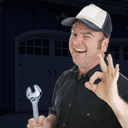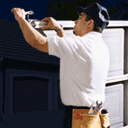Identifying Garage Door Spring Issues
 Garage doors play a crucial role in securing our homes and providing convenient access to our vehicles. Behind the scenes, garage door springs bear the weight and facilitate the smooth operation of the door. However, like any mechanical component, garage door springs are susceptible to wear and tear over time. Identifying spring issues early on can prevent major malfunctions and potential safety hazards. In this article, we will delve into the various types of garage door springs, common signs of spring problems, and the importance of timely repairs.
Garage doors play a crucial role in securing our homes and providing convenient access to our vehicles. Behind the scenes, garage door springs bear the weight and facilitate the smooth operation of the door. However, like any mechanical component, garage door springs are susceptible to wear and tear over time. Identifying spring issues early on can prevent major malfunctions and potential safety hazards. In this article, we will delve into the various types of garage door springs, common signs of spring problems, and the importance of timely repairs.
Types of Garage Door Springs
There are two main types of garage door springs: torsion springs and extension springs. Torsion springs are typically mounted horizontally above the door, while extension springs are installed along the sides of the tracks. Torsion springs use torque to counterbalance the weight of the door, while extension springs extend and contract to support the door’s weight. Both types are under high tension and are essential for smooth and controlled door movement.
Common Signs of Spring Issues
- Visible Wear and Tear: Inspect the springs visually for signs of wear and tear, such as rust, fraying cables, or gaps in the coils. If you notice any significant damage or deformation, it is essential to address it promptly.
- Imbalanced Door: An unbalanced garage door is a clear indication of spring problems. If one side of the door appears higher or lower than the other when closed, it could be due to a faulty spring.
- Difficulty Opening or Closing: If you notice that your garage door has become increasingly difficult to open or close manually, it could be a sign of worn-out or broken springs. The springs provide the necessary counterbalance for smooth operation, and any malfunction can strain the opener or cause the door to become misaligned.
- Loud Noises: A sudden loud noise, resembling a bang or a gunshot, may indicate a spring snapping or breaking. If you hear such a noise, it is crucial to cease using the door immediately and seek professional assistance.
- Sagging or Loose Cables: Garage door springs work in tandem with cables to support and guide the door’s movement. If you observe sagging or loose cables, it could be an indication of a faulty spring.
Importance of Timely Repairs
Promptly addressing garage door spring issues is vital for several reasons:
- Safety: Malfunctioning springs can pose significant safety hazards. Broken springs may cause the door to slam shut unexpectedly or collapse, potentially causing injury to individuals or damage to property. Regular maintenance and timely repairs ensure that your garage door operates safely.
- Prevent Further Damage: Ignoring spring issues can lead to additional problems. When the springs are not functioning properly, other components, such as the opener or cables, are forced to bear excessive stress, which can result in their premature failure. By addressing spring issues promptly, you can prevent costly repairs or replacements down the line.
- Prolonged Lifespan: Well-maintained garage door springs have a longer lifespan. Regular inspections, lubrication, and timely repairs help ensure that the springs operate efficiently, reducing the risk of premature wear and breakage.
Identifying garage door spring issues is crucial for maintaining the functionality, safety, and longevity of your garage door system. By familiarizing yourself with the signs of spring problems, such as visible wear, imbalanced doors, difficulty in operation, loud noises, and sagging cables, you can take proactive steps to address these issues promptly. Remember, seeking professional assistance for repairs and maintenance is essential to ensure the proper functioning of your garage door springs. By prioritizing the health of your garage door springs, you can enjoy a smoothly operating door while enhancing the safety and security of your home.
Garage Door Articles
- Upgrades to Increase Value
- How to Clean a Pre-Finished Steel Door
- Troubleshooting Garage Door Openers
- Garage Door Opens or Closes on It's Own
- Garage Door Spring System vs Pulley System
- How to make your garage door last as long as possible
- How to find a good garage door service
- Garage door Maintenance
- Check these things when your garage door is not working
- How to protect your garage from extreme temperatures
- Sectional garage door or solid garage door advantages and disadvantages
- Garage door safety tips
- Are you having garage door troubles here's what to do
- Fees associated with installing a new garage door
- Garage door wont open or close with remote
- Best Way to Clean Wood Garage Door
- Identifying Garage Door Spring Issues








